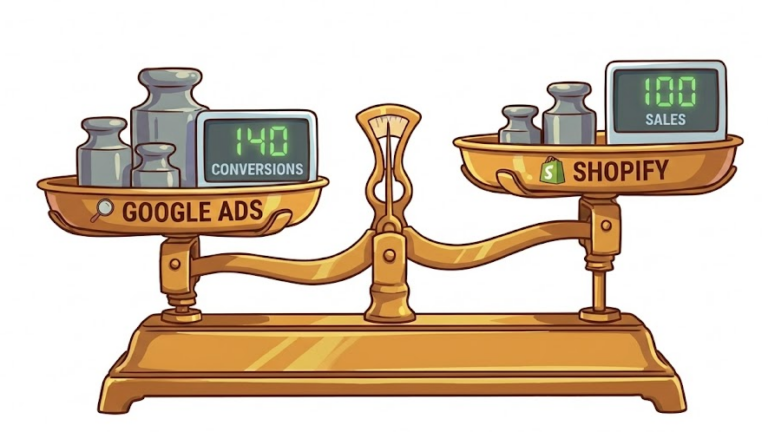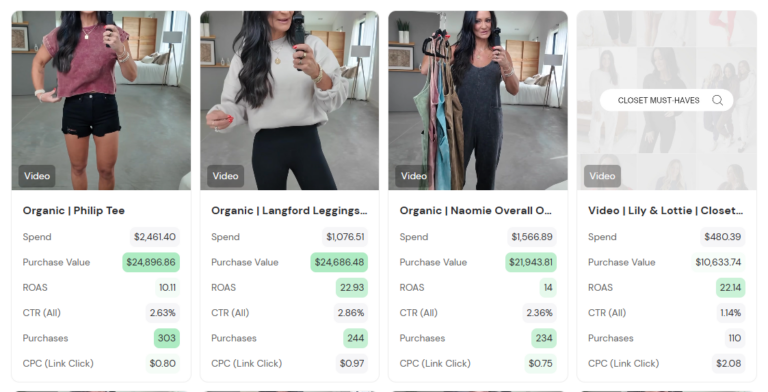Google Ads just introduced AI Max, and it’s already starting to show potential for driving some interesting changes in how campaigns perform. As AI continues to evolve, Google is finding new ways to use it in its advertising strategies. AI Max is designed to push campaigns beyond traditional keyword match types and help advertisers target more precisely using AI-driven insights and user data. If you’ve been testing it in your campaigns, we’re diving into what we’ve seen so far and how you can make the most of it.
What is Google AI Max?
Google AI Max is a new feature in Google Ads designed to take your targeting beyond just the keywords you’ve selected. Instead of only targeting specific keywords, it uses machine learning to automatically find and target the right audience based on user intent and behavior.
Think of it as an AI-powered tool that goes beyond your chosen keywords, helping you reach people who may not use the exact terms you’re targeting but are still likely to convert. Essentially, Google is treating AI Max like another keyword match type (similar to broad, phrase, or exact match), but with a focus on using AI to optimize campaigns based on real-time user data and actions.
Here’s a breakdown of how it works:
- Uses Machine Learning: AI Max analyzes user behavior and intent to show your ads to the most relevant audience, even if they aren’t using your exact target keywords.
- Dynamic Targeting: It expands beyond standard keyword matching, identifying new potential customers based on actions, searches, and browsing habits.
- Part of the Keyword Match Type: Google treats it like broad, phrase, or exact match but with a dynamic, AI-driven twist.
- Optimizes Campaigns Automatically: The goal is to improve ad efficiency, using AI to adjust and refine targeting in real-time.
Here’s What We’re Seeing
How Does Google Categorize AI Max?
With AI Max, Google is taking your existing campaigns and using its AI to extend the reach of your ads beyond what you’ve manually selected. This means that your ads will show for search terms and audiences that align with your campaign, but that you may not have directly chosen. AI Max works by pulling data from your website and user behavior to predict where your ads could perform best, targeting users based on intent rather than exact match keywords.
It’s still very much a work in progress, but the early data is showing that Google is expanding the use of AI Max in ways that go beyond simple keyword targeting.
Here’s Our Insights So Far
- No Spend Data on AI Max Keywords: One interesting thing we’ve noticed is that while we see AI Max terms coming through the campaigns, there’s no spend data for these keywords. This tells us that Google is going beyond the set seed keywords and finding new user search terms that might convert, based on its AI model and user data.
- Click-Through Rate (CTR) Is Much Higher on AI Max Terms: In the past 7 days, we’ve seen a 63% CTR on AI Max terms compared to just 3% for other search terms. This suggests that AI Max is successfully targeting users, not just keywords, which could be a sign that AI is focusing more on the user’s intent.
- Landing Page Expansion: One of the notable features of AI Max is that it uses Landing Page Expansion. This means that even if you’re only targeting specific products, AI Max may show ads for other products. For example, we were targeting three products in this campaign, but AI Max was showing data for products outside the scope. This might be something to monitor if you want to keep your targeting laser-focused.
Next Steps
As we continue testing AI Max, there are a few actions you should consider to take full advantage of its capabilities.
- Monitor Your Landing Page Performance: Since AI Max can show ads for products outside your intended scope, be sure to keep an eye on which landing pages are being shown. You may want to fine-tune your targeting and make sure the pages being shown align with your campaign goals.
- Watch Your Performance Across Match Types: Since AI Max operates similarly to broad match, you might want to experiment with broad match targeting more frequently. It’s showing promising results in some of our tests, so consider reallocating spend if you see strong performance in this area.
- Adjust and Monitor Campaigns Regularly: As with any new feature, you’ll need to adjust your campaigns based on the data you’re receiving. Make sure to monitor how your AI Max ads are performing and use the data to tweak your targeting and bidding strategies accordingly.
Google’s AI Max is still in its early stages, but it’s showing a lot of promise for expanding your ad reach and targeting more effectively. If you’re interested in testing it out or need help making the most of AI Max in your Google Ads campaigns, we’re here to guide you through the process. Reach out to our team today, and let’s work together to optimize your campaigns for the future of advertising.
FAQ
1. What is Google AI Max?
Google AI Max is a new feature in Google Ads that uses machine learning to go beyond your selected keywords and find new potential customers. It analyzes user behavior and intent to show your ads to relevant audiences, even if they’re not using the exact keywords you’ve targeted. Think of it as a dynamic match type that uses AI to optimize your targeting.
2. How does Google categorize AI Max in campaigns?
AI Max is treated as an additional keyword match type by Google. It works by expanding your targeting based on user behavior and intent, rather than only the keywords you select. This allows Google to serve your ads for terms you may not have explicitly targeted.
3. Where can I see AI Max data in my Google Ads account?
You can find AI Max data in the Search Terms and Keywords tabs by segmenting your campaign by Keyword Match Type. This lets you track how AI Max terms are performing alongside your other keywords.
4. What insights have we seen from testing AI Max?
AI Max terms have shown a 63% CTR over the past 7 days, compared to just 3% for other terms. It also expands landing pages beyond the scope of your original product targeting, which can sometimes lead to ads showing for unrelated products. No spend data has been recorded for AI Max keywords, suggesting AI Max is targeting beyond your selected terms.
5. What should I do next to optimize for AI Max?
Start by testing one keyword per ad group to let AI Max expand targeting. Monitor landing pages to ensure ads are showing for the right products and experiment with broad match targeting. Regularly track performance to adjust your strategy based on the data.
6. How do I measure the success of AI Max?
Monitor the CTR and conversion metrics of AI Max terms compared to traditional keywords. Pay attention to which landing pages are being shown and whether they align with your campaign goals. Track how budget allocation is affected by AI Max targeting.
7. Can AI Max help with long-funnel campaigns?
Yes, AI Max can reach users earlier in their journey, making it beneficial for long-funnel campaigns. By targeting intent and behavior, it can drive traffic from users who may convert later on.
8. How do I get started with AI Max?
If available, enable AI Max in your campaign settings and experiment by adding one keyword per ad group. Track performance over time to see how AI Max enhances your campaign reach.
9. Will AI Max replace manual keyword targeting?
No, AI Max is not a replacement for manual targeting. It works in addition to your existing keyword targeting, expanding your reach with AI-based insights.
10. What’s the future of AI Max?
AI Max is still evolving, with future updates expected. It’s an exciting feature that helps expand campaign reach, and ongoing testing and optimization will provide more insights into its full potential.






no replies